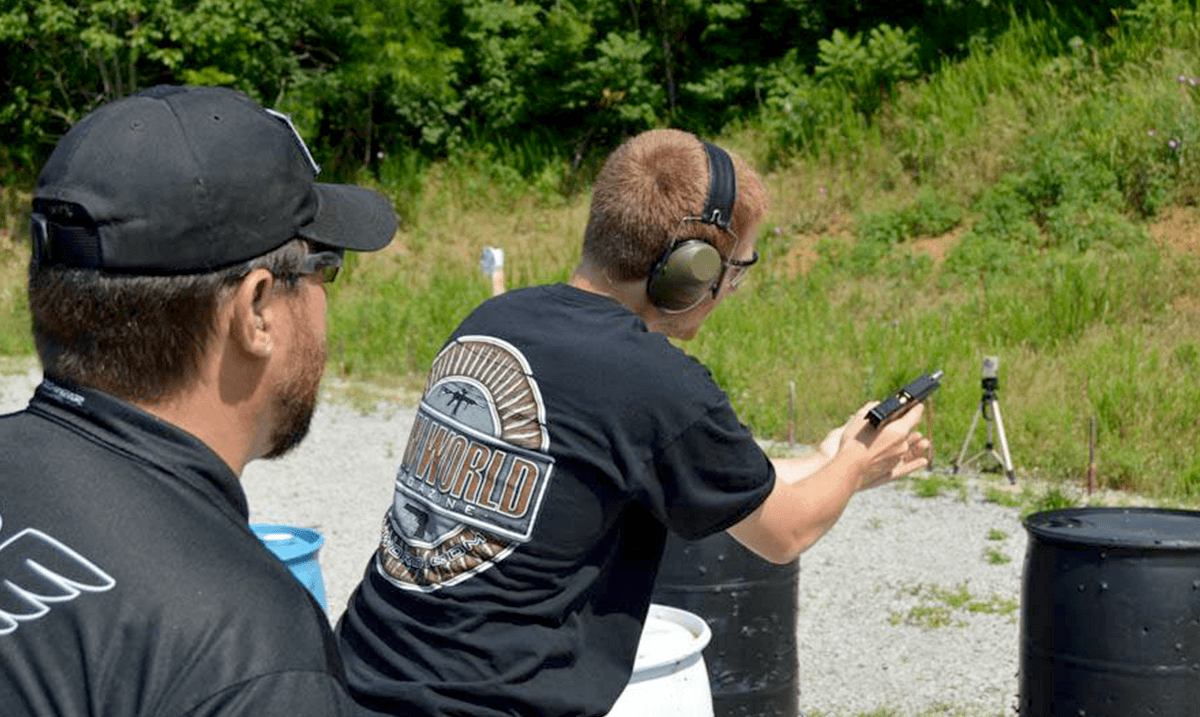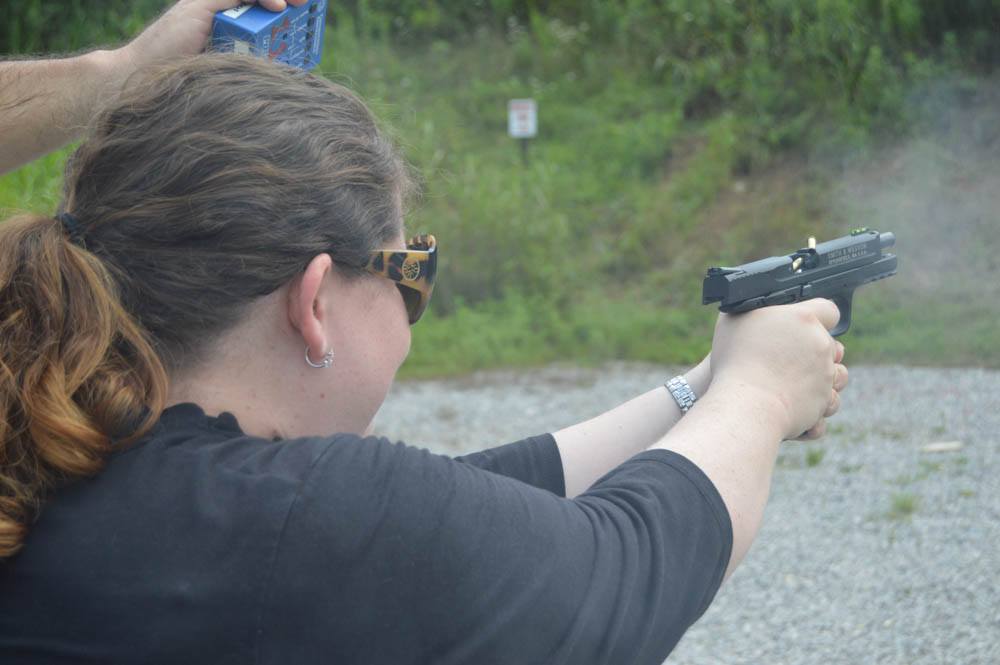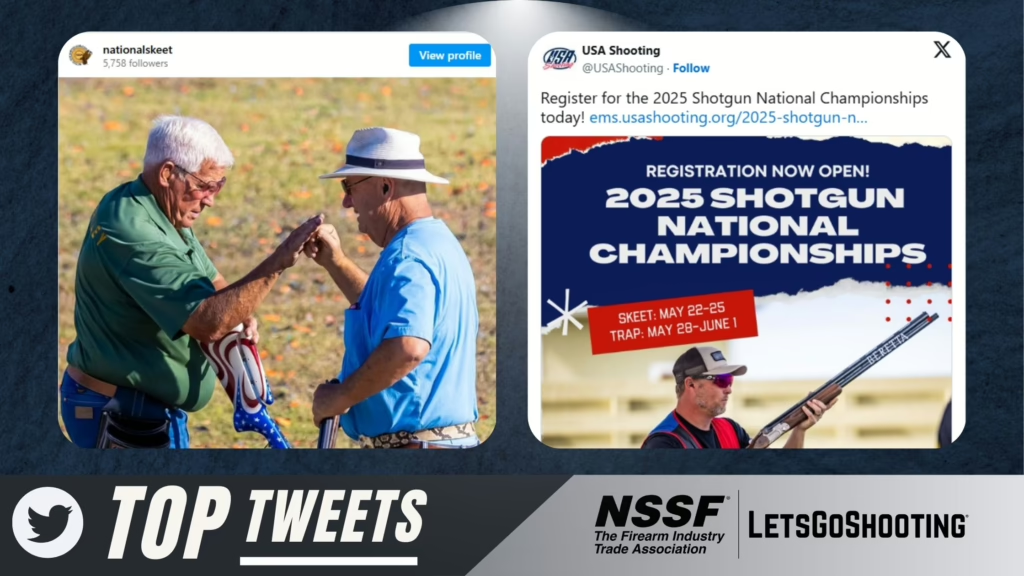
Learn to quickly identify and clear the most common handgun malfunctions and get back in the game with pistol malfunction drills from Gun Digest. Several types of malfunctions can occur in a semi-auto handgun and the first thing a shooter needs to do is identify the type of malfunction.

When malfunctions happen in a match, like in this photo, malfunction drills allow the shooter to clear the gun and get it back into the game without going into a panic.
The most common pistol malfunctions include:
- Failure to feed: This is where the ammunition may start to come out of the magazine, but the slide’s forward motion has stopped before the cartridge has fully exited the magazine. There could be several reasons for this. Usually, with a semi-auto pistol, this malfunction is either related to a bad magazine or with the use of reloaded ammunition not assembled correctly. Find out how to quickly and correctly clear this malfunction with drills from Gun Digest.
- Failure to chamber: This is where the cartridge has exited the magazine but is not fully seated into the chamber and the slide is not completely closed. Learn how to efficiently clear this malfunction with drills from Gun Digest.
- Failure to lock: This is where the cartridge is fully into the chamber, but the slide is just out of battery enough to not fully close, and the trigger mechanism is disconnected, rendering the pistol unable to fire. Quickly and correctly clear this malfunction with drills from Gun Digest.
- Failure to fire: Here, you pull the trigger, the hammer or striker falls and there is no kaboom! There could also be several reasons for this. Train how to effectively clear this malfunction with drills from Gun Digest.
- Failure to unlock: This is extremely unusual in a semi-auto. Normally if the pistol fires, the slide will move rearward, except in very unusual circumstances. Learn how to correctly clear this malfunction with drills from Gun Digest.
- Failure to extract: The pistol fired, but it left an empty case in the chamber. This is usually a pretty bad condition when it happens on the firing line in a match, but is usually a pretty simple fix back in the shop. Practice quickly and correctly clearing this malfunction with drills from Gun Digest.
- Failure to eject: This is where the cartridge fired and was pulled out of the chamber, but the spent case did not clear the gun. It was not ejected away from the pistol. Find out how to clear this malfunction with drills from Gun Digest.
- Failure to cock: This is where the hammer follows the slide down during the firing cycle. This is always a bad situation. Sometimes, there wasn’t enough power in the cartridge to fully push the slide rearward and also not far enough to the rear to cock the hammer. Usually this is a squib load. If it’s not a squib load, then there is an issue with the hammer and/or sear engagement, and a gunsmith needs to get involved. If it is a squib load, you need to immediately get the pistol off the firing line and get the bullet cleared out of the barrel. Bullets usually get stuck in the barrel from squib loads. Be prepared to clear this malfunction with drills from Gun Digest.
Now that we have an understanding of what a malfunction is, the next point to learn is how to identify what type of malfunction you are dealing with. Different malfunctions require different clearing steps. The first step in clearing a pistol with a malfunction that happens during a match is to determine as quickly as possible what the nature of the problem is, then, also as quickly as possible, apply the proper corrective action.
See pistol malfunction and clearing drills in full article at GunDigest.com.
Special thanks to GunDigest.com for providing this insightful content.
GunDigest.com is a shooter’s opportunity to keep up with what’s going on in the world of the gun.





